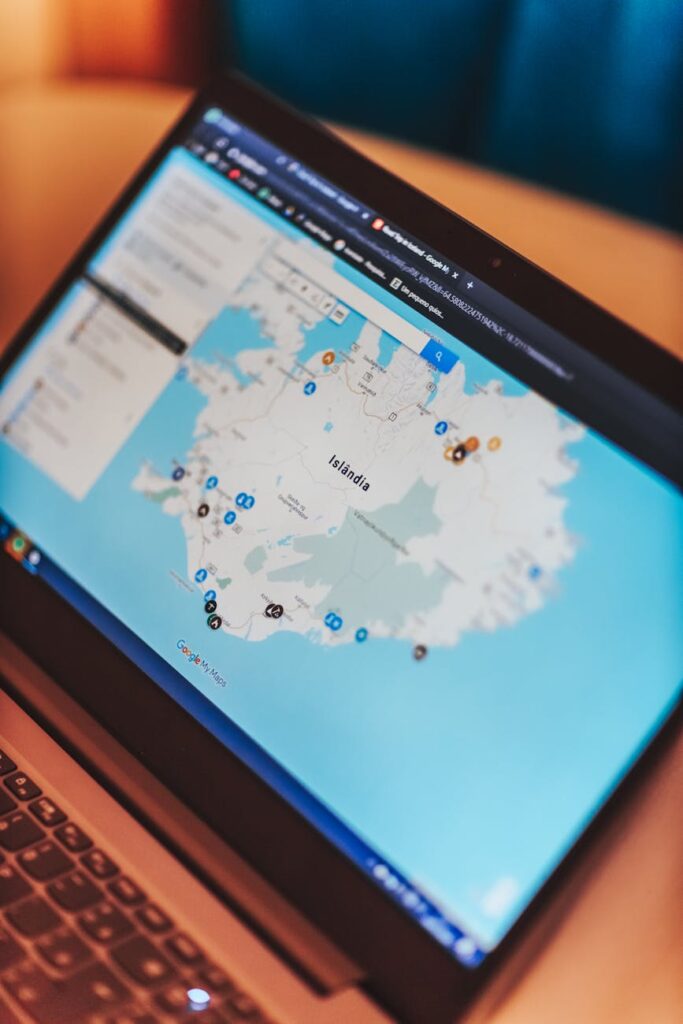Your Brain Hates Boring Notes. Here’s a Better Way.
Remember high school? Staring at a notebook filled with line after line of blue-inked text. It was a wall of words. A marathon of monotony. You were probably told it was the *only* way to learn, to capture information. But let’s be honest, how much of it actually stuck? How often did you go back to re-read those notes and feel… inspired? Probably never. Our brains aren’t built for linear, boring data dumps. They’re wired for connection, color, and creativity. That’s where mind mapping comes in. It’s not just another note-taking fad; it’s a method that works *with* your brain’s natural tendencies to help you learn faster, remember more, and generate brilliant ideas. It’s time to ditch the endless bullet points and unlock what your mind is truly capable of.
So, What Exactly Is Mind Mapping?
At its core, a mind map is a visual thinking tool. It’s a diagram used to visually organize information. Instead of starting at the top of a page and working your way down, you start in the center with a single, central idea. Then, you branch out. And out. And out. Think of it like a tree, a spiderweb, or the beautiful, branching neurons in your own brain. This central idea could be anything: a book you’re reading, a project you’re planning, a problem you’re trying to solve, or a subject you’re studying for an exam.
From that central hub, you draw branches for your main themes or key thoughts. From those main branches, you can draw smaller, secondary branches for supporting details. And so on. Instead of long, clunky sentences, you use short keywords, colors, and images. The result isn’t a rigid, linear document; it’s a vibrant, organized, and easy-to-understand picture of your thoughts.
A mind map is often created around a single concept, drawn as an image in the center of a blank page, to which associated representations of ideas such as images, words and parts of words are added. Major ideas are connected directly to the central concept, and other ideas branch out from those.
The concept was popularized by British author and psychologist Tony Buzan in the 1970s. He studied how the brain processes information and realized that we think radially, not linearly. Ideas don’t pop into our heads in a neat, orderly line. They explode, connecting to other ideas in a web of associations. Mind mapping simply puts that natural process down on paper. It’s a map of your thoughts, and it’s a game-changer.

The Science: Why Your Brain Loves This Stuff
This isn’t just about making your notes look pretty. There’s real cognitive science behind why mind mapping is so effective. It’s a full-brain workout.
Engaging Both Sides of the Brain
You’ve probably heard about the left-brain/right-brain theory. The left hemisphere is often associated with logic, words, lists, and analysis. The right hemisphere is the creative, imaginative, and visual side. Traditional note-taking is an intensely left-brain activity. It’s all words and structure. But mind mapping? It forces both hemispheres to work together. The keywords, logic, and structure engage the left brain, while the colors, images, and spatial arrangement fire up the right brain. When your whole brain is engaged, your ability to learn, create, and recall information skyrockets. It’s synergy in action.
Radiant Thinking and Association
As we mentioned, your brain thinks radially. When you think of the word “beach,” you don’t then think “A, B, C…” You might instantly think of sun, sand, waves, vacation, seagulls, the smell of sunscreen. All these ideas radiate out from the central concept. A mind map mirrors this exact process. Each branch triggers new associations, allowing your ideas to flow freely and naturally. This is why it’s such a powerful tool for brainstorming—it removes the mental blocks that linear thinking can create.
The Power of Visuals and Keywords
Our brains are visual processing machines. A huge portion of our sensory cortex is devoted to vision. Studies show that we can process images significantly faster than text. By using colors, drawings, and symbols in your mind map, you’re creating powerful visual cues. When you try to recall the information later, you won’t just be trying to remember a word; you might remember “that blue branch with the little sun drawn next to it.” This dual-coding—combining a keyword with a visual cue—creates a much stronger neural pathway, making memory recall almost effortless.
How to Create Your First Mind Map (It’s Easier Than You Think)
Ready to give it a try? The beauty of mind mapping is its simplicity. You don’t need expensive software or artistic talent. You just need a blank piece of paper and a few colored pens. Let’s walk through the steps.
Step 1: Gather Your Tools (Keep it Simple)
For your first map, go analog. Grab a blank sheet of paper—unlined is best to give you total freedom—and turn it landscape (horizontally). Find a few different colored pens or markers. That’s it. While there are some fantastic digital mind mapping tools out there (like XMind, Miro, or Coggle), starting with pen and paper connects you more deeply to the process. The physical act of drawing and writing helps to cement the ideas in your mind.
Step 2: Define Your Central Idea
What’s the one big topic you’re exploring? A vacation plan? A new business idea? Chapter 5 of your biology textbook? Whatever it is, draw a small image or write a single keyword representing it right in the center of your page. Circle it. This is your anchor, the starting point for all your other thoughts.
Let’s say you’re planning a marketing campaign. Your central image might be a megaphone or the word “CAMPAIGN“.
Step 3: Branch Out with Main Themes
Now, think of the most important sub-topics related to your central idea. These will be your main branches. Draw thick, curved lines radiating out from the center for each one. Label each branch with a single keyword or a very short phrase. For our marketing campaign example, your main branches might be:
- Audience
- Channels
- Budget
- Goals
- Content
Use a different color for each main branch. This helps visually separate the different categories of thought and makes the map easier to read at a glance.
Step 4: Add the Next Layer of Detail
This is where you start fleshing things out. From each main branch, draw smaller, thinner sub-branches. These are for the details. For example, coming off your “Channels” branch, you might add sub-branches for “Social Media,” “Email,” and “Blog.” From the “Social Media” branch, you could add even smaller branches for “Instagram,” “LinkedIn,” and “TikTok.” Continue asking questions and adding more layers of detail. Don’t overthink it; just let the ideas flow.
Step 5: Use Keywords, Colors, and Images
This is the golden rule: one keyword per branch. Resist the temptation to write full sentences. Using single words forces your brain to make connections and keeps the map clean and powerful. Sprinkle in small, simple drawings (stick figures are fine!) wherever you can. An image of a dollar sign on the “Budget” branch is much more memorable than the word itself. The combination of colors, keywords, and images is what makes the map come alive.
Practical Applications: Where to Use Your New Superpower
Mind mapping isn’t just for a single purpose. It’s a versatile tool you can apply to almost any area of your life or work where thinking is required. Here are a few popular uses:
Supercharge Your Study Sessions
This is a classic. Instead of transcribing a lecture word-for-word, try mind mapping it. Put the lecture’s main topic in the center and create main branches for the key concepts the professor covers. You’ll find you’re not just passively receiving information; you’re actively processing and organizing it in real-time. When it comes time to revise for an exam, reviewing a one-page, colorful mind map is infinitely faster and more effective than re-reading 30 pages of linear notes.
Brainstorm Like a Genius
Whether you’re working alone or with a team, mind mapping is the ultimate brainstorming tool. The radiant structure encourages free association and helps you generate ideas without the pressure of putting them in a specific order. You can see how different ideas connect and build upon one another. It gets you out of mental ruts and helps you discover creative solutions you might have otherwise missed.
Plan Projects with Absolute Clarity
Feeling overwhelmed by a big project? Mind map it. Put the project goal in the center and create branches for major phases, deliverables, team members, resources, and deadlines. It gives you a high-level overview of the entire project on a single page. You can see potential bottlenecks, understand dependencies between tasks, and ensure nothing falls through the cracks. It turns a mountain of complexity into a manageable, visual plan.

Take More Effective Meeting Notes
Meetings can be a time suck, especially when the notes are a jumbled mess of conversations and to-dos. Try mind mapping your next meeting. Put the meeting’s purpose in the center. Create branches for agenda items, key decisions, and action items. As people talk, you can quickly capture the essence of their points on the relevant branch. At the end, you have a clear, concise summary of what was decided and who is responsible for what. No more wading through pages of a transcript to find the important stuff.
Conclusion
Linear note-taking served a purpose, but it’s a tool from a different era. Our world is complex, interconnected, and fast-paced. We need thinking tools that match. Mind mapping is more than just a technique; it’s a shift in how you interact with information. It’s about engaging your whole brain, embracing creativity, and seeing the bigger picture. It gives you clarity when you feel overwhelmed, sparks ideas when you feel stuck, and helps you remember what matters most.
So grab a piece of paper. Pick a topic—any topic. And draw. Don’t worry about it being perfect. Your first map might be messy, and that’s okay. The goal is not to create a work of art, but to unlock the powerful, radiant, and brilliant thinking that’s already inside you.
FAQ
Is it better to mind map on paper or with a digital tool?
Both have their advantages! Starting with pen and paper is highly recommended because the physical act of drawing and writing creates a stronger cognitive link. It’s simple and free. However, digital tools are fantastic for collaboration, editing, and creating large, complex maps that you can easily save and share. Our advice? Start with paper to learn the core technique, then explore digital apps to see what works best for your workflow.
What if I’m not artistic and can’t draw?
You absolutely do not need to be an artist! The images in a mind map are for *you*. They are simple visual cues, not masterpieces. Stick figures, basic shapes (squares, circles, stars), and simple icons are perfectly effective. The goal is to create a visual association, not to win an art prize. The more you practice, the more your personal visual vocabulary will grow.
How many branches should I have? Is there a limit?
There are no hard and fast rules. The map should serve its purpose. For a simple brainstorming session, you might just have two or three layers of branches. For summarizing an entire book, your map could be much more detailed and complex. A good guideline is to keep it manageable. If a map becomes too cluttered and hard to read, you might consider breaking the topic down and creating a separate, more detailed mind map for one of the main branches.







